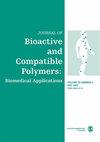结合 eEF2K 基因和药物输送治疗乳腺癌
IF 2.2
4区 生物学
Q3 BIOTECHNOLOGY & APPLIED MICROBIOLOGY
引用次数: 0
摘要
真核细胞延伸因子 2 激酶(eEF2K)在包括激素受体阳性乳腺癌在内的多种癌症类型中过度表达。靶向 eEF2K 已证明具有抗肿瘤活性,与化疗联合使用可提高疗效。在此,我们介绍了基于金纳米粒子(AuNPs)的 siRNAs 与多柔比星(DOX)联合用于雌激素受体(ER)阳性乳腺癌(MCF7)细胞,从而实现 eEF2K 的基因敲除。siRNA 和 DOX 以不同的 siRNA:drug 比例共同投放在同一个 NP 上,或分别投放在不同的混合 NP 上。siRNA 与 DOX 的比例为 1:2.25,显示出协同抑制癌细胞增殖的效果。将 eEF2K siRNAs 和 DOX 分别投放到不同的 NP 上显示出的抗增殖活性优于同时投放到同一 NP 上。这些结果表明,抑制 eEF2K 能增强化疗对 MCF7 乳腺癌细胞的抗癌活性,而且治疗药物的递送方法对细胞毒性有影响。本文章由计算机程序翻译,如有差异,请以英文原文为准。
Combination eEF2K gene and drug delivery for treatment of breast cancer
Eukaryotic elongation factor 2 kinase (eEF2K) is overexpressed in a wide variety of cancer types, including hormone receptor positive breast cancer. Targeting of eEF2K has demonstrated anti-tumor activity with the potential of enhanced treatment efficacy in combination with chemotherapy. Here, we describe gold nanoparticle (AuNPs) based delivery of siRNAs enabling eEF2K knockdown in combination with doxorubicin (DOX) to estrogen receptor (ER) positive breast cancer (MCF7) cells. The siRNAs and DOX were co-delivered on the same NP or delivered on separate NPs in a mixture at various siRNA:drug ratios. Effective inhibition of eEF2K expression was provided together with delivery of DOX leading to the enhanced inhibition of cancer cell proliferation compared to DOX delivery alone. siRNA:DOX ratio of 1:2.25 demonstrated synergistic inhibition of cancer cell proliferation. Delivery of eEF2K siRNAs and DOX on separate NPs showed anti-proliferative activity superior to co-delivery on the same NP. These results suggest that eEF2K inhibition enhanced the anticancer activity of chemotherapy on MCF7 breast cancer cells and that the delivery method of the therapeutics had an influence on cytotoxicity.
求助全文
通过发布文献求助,成功后即可免费获取论文全文。
去求助
来源期刊

Journal of Bioactive and Compatible Polymers
工程技术-材料科学:生物材料
CiteScore
3.50
自引率
0.00%
发文量
27
审稿时长
2 months
期刊介绍:
The use and importance of biomedical polymers, especially in pharmacology, is growing rapidly. The Journal of Bioactive and Compatible Polymers is a fully peer-reviewed scholarly journal that provides biomedical polymer scientists and researchers with new information on important advances in this field. Examples of specific areas of interest to the journal include: polymeric drugs and drug design; polymeric functionalization and structures related to biological activity or compatibility; natural polymer modification to achieve specific biological activity or compatibility; enzyme modelling by polymers; membranes for biological use; liposome stabilization and cell modeling. This journal is a member of the Committee on Publication Ethics (COPE).
 求助内容:
求助内容: 应助结果提醒方式:
应助结果提醒方式:


